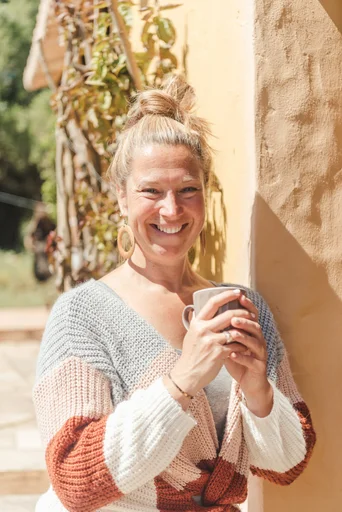Mudras 101: Learn Yoga Hand Gestures

Introduction to Mudras in Yoga
In the ancient practice of yoga, Mudras play a significant role in deepening the connection between the mind, body, and spirit. But what exactly are Mudras and why do they matter? Let's explore the origin, significance, and the science behind these sacred hand gestures.
What Are Mudras and Why They Matter
The Origin and Significance of Mudras
Mudras, derived from Hinduism, Buddhism, and yoga traditions, are symbolic seals or gestures that hold the key to deepening one's connection to yoga practice. These sacred hand movements have been used for thousands of years in various rituals and practices. For instance, they have been employed in Vedic chanting to regulate stress, rhythm, and intonation. Additionally, they are utilized in ritual offerings to deities as well as in visual portrayals of different gods and goddesses.
The Connection Between Mudras and Yoga
In Indian religions, dance, and yoga, Mudras hold immense significance. They are not only employed in iconography but also play a vital role in spiritual practices. Furthermore, these hand gestures are integrated into various ritual contexts to honor Hindu deities and signify emotions, moods, and intentions.
The Science Behind Mudras: How They Work
The Role of Hand Gestures in Energy Flow
The science behind employing hand gestures is fascinating. Each finger on the hand represents one of the five elements of the body - air (index finger), space (middle finger), fire (ring finger), water (little finger), and earth (thumb). By connecting specific parts of the body through Mudras, practitioners can restore imbalances in these elements and improve overall health.
Mudras and Their Impact on the Mind and Body
Moreover, Mudras have a profound impact on energy flow throughout the body. When practiced correctly, these sacred hand movements can alter or redirect energy flow to bring about positive changes in both the body and mind. This includes enhancing concentration, memory power as well as balancing chakras for overall well-being.
Exploring Key Mudras and Their Meanings

In the practice of yoga, specific hand gestures, known as Mudras, hold deep symbolic meanings and are used to enhance the mind-body connection. Let's explore three key Mudras and their significance in yoga practice.
Anjali Mudra: The Gesture of Prayer and Respect
Anjali Mudra, also referred to as the prayer gesture, is a simple yet powerful hand seal that signifies reverence and gratitude. To perform this Mudra, bring your palms together at the center of your chest, fingers pointing upwards. This gesture symbolizes the balance between the right and left sides of the brain, creating a sense of harmony within oneself.
The significance of Anjali Mudra in yoga practice lies in its ability to create a meditative state and foster a sense of calmness. By bringing the hands together, we acknowledge the divine spark within ourselves and express our respect for others. It is often used at the beginning or end of a yoga session as a way to center oneself and show gratitude for the practice.
Padma Mudra: The Lotus Flower Offering
Padma Mudra, or the lotus flower gesture, represents purity, enlightenment, and spiritual awakening. To practice this Mudra, form a lotus flower shape with your hands by joining the tips of your thumbs and little fingers on both hands while keeping the other fingers extended. This gesture embodies beauty emerging from murky waters, signifying spiritual growth amidst life's challenges.
The symbolism of the lotus in yoga reflects its journey from darkness into light, mirroring our own path towards self-realization. Incorporating Padma Mudra into meditation or pranayama practices can evoke feelings of grace, serenity, and inner transformation.
Hakini Mudra: Enhancing Concentration and Memory
Hakini Mudra is known for its ability to enhance cognitive functions such as concentration and memory retention. To perform this Mudra, touch all fingertips on one hand with their corresponding fingertips on the other hand while keeping both hands at heart level. This gesture activates connections between the right and left hemispheres of the brain, promoting mental clarity.
The benefits of Hakini Mudra extend beyond enhancing cognitive abilities; it also helps in reducing mental fatigue and stress. Integrating this mudra into daily activities such as studying or working can improve focus and productivity while calming an overactive mind.
As we delve deeper into these sacred hand movements, it becomes evident that each Mudra holds profound meaning and purpose within yoga practice.
Integrating Mudras into Your Yoga Practice
Now that we have explored the significance of Mudras and their meanings, it's essential to understand how to integrate these sacred hand gestures into your yoga practice. By combining Mudras with yoga poses and breathing techniques, you can enhance the mind-body connection and deepen your spiritual practice.
When and How to Use Mudras in Yoga Poses
Combining Mudras with Breathing Techniques
Incorporating Mudras into your yoga practice can be a powerful way to deepen the effects of pranayama, or yogic breathing exercises. For example, while practicing deep belly breathing (diaphragmatic breathing), you can perform the Hakini Mudra to enhance concentration and memory retention. The synergy between breath control and hand gestures amplifies the overall impact on your mental clarity and focus.
Additionally, pairing specific Mudras with different types of breathwork such as alternate nostril breathing (Nadi Shodhana) or cooling breath (Shitali Pranayama) can further influence the flow of prana, or life force energy, within the body. This combination creates a holistic approach to balancing both physical and mental well-being during your yoga practice.
Mudras for Different Types of Yoga Practice
Whether you are practicing Hatha yoga, Vinyasa flow, or Kundalini yoga, integrating Mudras can add depth and intention to your sessions. For instance, in a restorative yoga class focused on relaxation and rejuvenation, incorporating the calming Padma Mudra can enhance feelings of grace and serenity during gentle asanas and meditation.
Similarly, in a more dynamic Vinyasa flow class where movement is synchronized with breath, utilizing energizing Anjali Mudra at key moments such as Sun Salutations can help center your focus and connect with the spiritual aspects of your practice.
Designing a Yoga Sequence with Mudras
Creating a Balanced Yoga Routine
When designing a yoga sequence that incorporates Mudras, it's important to create a balanced routine that addresses various aspects of physical, mental, and spiritual well-being. Begin by selecting Mudras that resonate with your intentions for the practice; for example, if you seek inner peace and self-reflection, consider integrating the grounding Akasha Mudra, which connects you to the element of space.
As you move through different asanas (yoga postures), weave in complementary hand gestures that align with each pose's intention. For instance, transitioning from Mountain Pose (Tadasana) to Forward Fold (Uttanasana) could involve moving from an open-handed gesture like Citta Mudra, representing consciousness and awareness when standing tall, to a downward-facing gesture like Hakini Mudra, promoting mental clarity during forward folding.
Example of a Yoga Sequence Incorporating Mudras
To illustrate how mudras can be integrated into a yoga sequence effectively:
Begin in Easy Pose (Sukhasana) - Perform Anjali Mudra
Transition to Cat-Cow Stretch - Engage Citta Mudra
Move into Downward-Facing Dog (Adho Mukha Svanasana) - Shift into Hakini Mudra
Continue through Sun Salutations - Embrace Padma Mudra
Conclude in Corpse Pose (Savasana) - Rest hands in Akasha Mudra
By infusing each posture with an appropriate mudra that resonates with its purpose or benefits, you create an integrated experience that enhances both physical alignment and energetic balance throughout your practice.
The Impact of Mudras on Meditation and Energy Flow

Mudras, the sacred hand gestures used in yoga and meditation, have a profound impact on the deepening of meditation practices and the flow of energy within the body. These hand positions are believed to stimulate specific areas of the brain and influence the energy of the body, bringing about a sense of calmness, emotional balance, and enhanced concentration during meditation.
Mudras as a Tool for Deepening Meditation
Selecting specific meditation hand symbols is an essential aspect of deepening one's meditation practice. Each meditation hand symbol holds unique significance and can be chosen based on individual intentions or desired outcomes during meditation sessions. For instance, incorporating the calming Padma Mudra into meditation can evoke feelings of purity and spiritual awakening, while using Anjali Mudra can foster a sense of reverence and gratitude.
The effect of these specific meditation hand symbols goes beyond mere physical gestures; they serve as conduits for channeling internal energy and promoting mental focus. By integrating these mudras into meditation practice, individuals can experience a heightened sense of awareness, emotional equilibrium, and a deeper connection to their inner selves.
The Effect of Mudras on Energy Channels (Prana)
Mudras play a pivotal role in regulating the flow of energy within the body. When specific points on the hands are connected through fingertip touch, it influences the flow of prana or life force energy throughout the body. This harmonization helps in calming the mind, balancing emotions, and deepening concentration during meditation.
Moreover, integrating meditation hand signs into yoga practice aids in achieving physical and mental peace while promoting overall well-being. The synergy between breath control techniques such as pranayama and these symbolic hand gestures creates a holistic approach to balancing both physical and mental well-being during meditation sessions.
Transforming Your Energy with Mudras
Incorporating hand signs into daily activities extends beyond formal yoga or meditation sessions. Infusing moments of mindfulness into even simple tasks can bring about transformative changes in one's energy levels and overall well-being. As individuals delve deeper into this beautiful path of self-discovery through mudra yoga, they often marvel at the positive changes it brings into their lives.
Personal experiences with mudras have shown that these symbolic gestures have been successful in aiding concentration, intensifying meditation practices, counteracting physical complaints such as asthma attacks or constricted chest sensations. Additionally, fellow hikers have reported success with specific mudras for various purposes related to their physical well-being.
As we continue to explore this ancient practice further, it becomes evident that mudras hold immense potential for transforming our energy levels and enhancing our overall quality of life.
Conclusion: Bringing Mudras into Your Daily Routine
Now that we have delved into the world of Mudras and their profound impact on yoga practice, it's time to explore how you can bring these sacred hand gestures into your daily routine. By incorporating Mudras into everyday activities, you can enhance your overall well-being and deepen your mind-body connection.
Simple Steps to Start Practicing Mudras Today
Choosing Mudras That Resonate with You
Selecting the right Mudras for your practice is essential in aligning with your intentions and goals. Begin by exploring different hand gestures and their meanings to find those that resonate with you personally. Whether it's the meditative Padma Mudra, the grounding Akasha Mudra, or the gratitude-inducing Anjali Mudra, there are numerous options to choose from based on your unique needs and aspirations.
As one practitioner shared, "What I most love about mudras is that they can be used at any time, as a gentle reminder that we can take a moment to just breathe and reconnect with our inner knowledge." This sentiment emphasizes the personal nature of selecting mudras that deeply resonate with individual experiences and aspirations.
Incorporating Mudras into Everyday Activities
Once you have identified the Mudras that speak to you, integrating them into everyday activities becomes an enriching practice. Whether it's during moments of reflection, meditation, or even while engaged in simple tasks like reading or walking, these symbolic hand gestures serve as gentle reminders to pause, breathe, and reconnect with your inner wisdom.
Another individual shared their experience, stating, "For many years, I have successfully used mudras to help me concentrate better or to intensify my meditation." This highlights how incorporating mudras into daily activities can significantly impact one's ability to focus and deepen their spiritual practices.
The Journey Ahead: Exploring Mudras Further
Resources for Learning More About Mudras
As you embark on this journey of integrating Mudras into your daily routine, there are abundant resources available for further exploration. Books by renowned authors such as Nubia Teixeira and Dana Trixie Flynn offer comprehensive insights into classic yoga mudras and their applications in modern practice. Additionally, online platforms like Yoga Journal provide updated articles on specific yoga hand symbols intuitively linked with various poses.
Encouragement to Keep Experimenting with Mudras
Finally, as you continue experimenting with Mudras, remember that each individual's experience is unique. Embrace the process of discovering which hand symbols resonate most profoundly with you and adapt them organically into your daily life. Just as one fellow practitioner expressed, "Don’t ask me why, but I always felt my little finger games to be something quite intimate... It probably wasn’t the right time for them yet." This serves as a reminder that the journey of exploring mudras is deeply personal and unfolds at its own pace.
As you venture forward in this exploration of sacred hand gestures in yoga practice, may you find joy in discovering new ways to integrate them seamlessly into your daily routine.
See Also
Enhance Your Practice with 4 Powerful Mudras
Discover Anjali Mudra: A Beginner's Guide to Yoga
The Basics of Yoga: A Beginner's Guide
Exploring Brahmacharya Yoga: Postures, Chants, and Gestures
The Satya Yoga Flow: Postures, Chants, Gestures, and Meditation
We bring back the importance of initiation into womanhood by Roos-Veerle Krijnen & Ella-June Henrard
Welcome to the Women’s Initiation Retreat by Naked Truth Retreats, a transformative journey into the depths of your True Feminine Nature. This retreat, scheduled from 17th to 24th August 2024 in Portugal, invites you to remember the sacredness and wholeness of your being.
Roos-Veerle Krijnen & Ella-June Henrard



